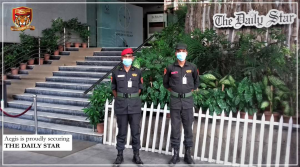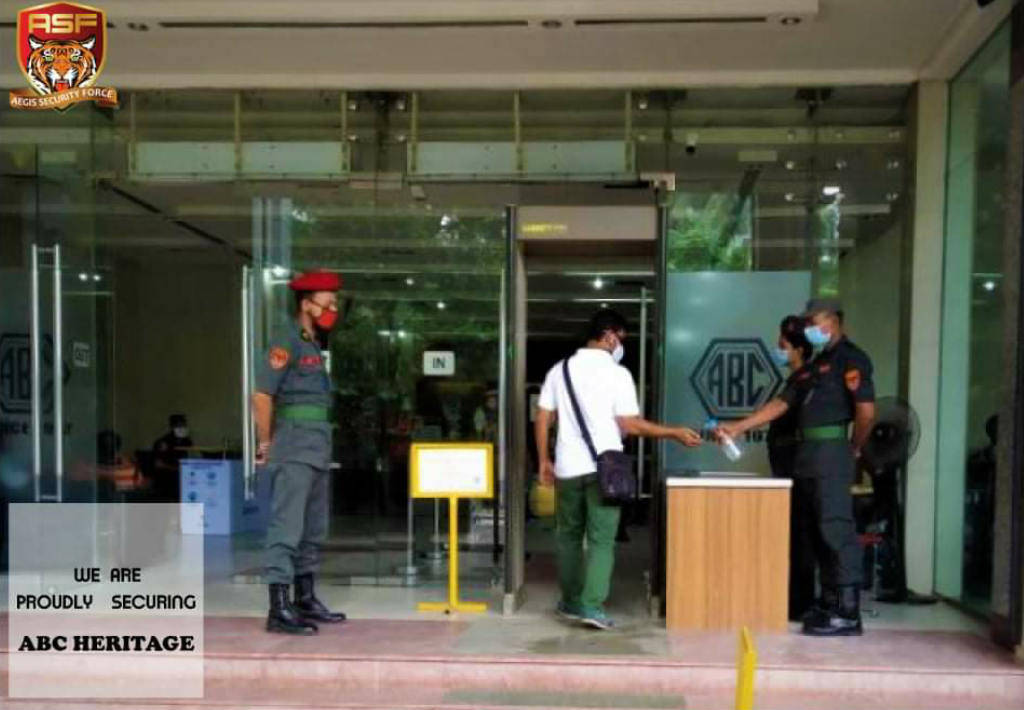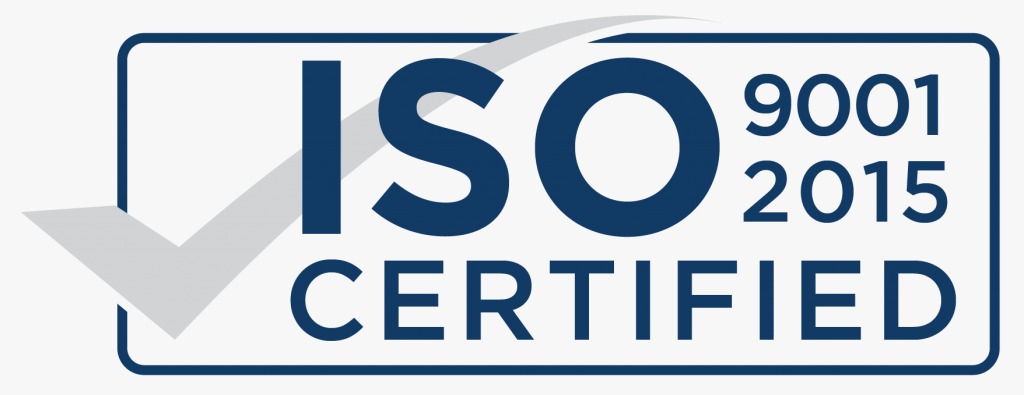Are you aware of the various security services available to protect your business?
Security has emerged as a top priority for people, organizations, and institutions in a world that is becoming more linked. Due to both physical and cyber threats, there has never been a more pressing demand for reliable security services. But what specific security services serve to safeguard both our online and offline worlds?
Learn about the different types of security services and choose the one that best suits your needs. This extensive manual explores the many dimensions of security services and sheds light on the wide variety of precautions used to provide security and peace of mind.
Why Different Types of Security Services
For many compelling reasons, employing different types of security services is imperative in today’s dynamic landscape. Firstly, these services act as a shield against an ever-evolving array of threats – from cyberattacks that compromise sensitive data to physical breaches that threaten safety. By entrusting experts in cybersecurity and physical protection, individuals and organisations can mitigate risks that could otherwise lead to significant financial losses and reputational damage.

Secondly, security services provide reassurance and peace of mind, fostering an environment where individuals can focus on their pursuits without constant worry. Furthermore, these measures enhance compliance with regulatory requirements, demonstrating a commitment to ethical practices and legal standards. Lastly, embracing diverse security services signifies a commitment to the well-being of employees, clients, and stakeholders, fostering trust and reliability.
Security service types: Control risk management and threat assessment
Control risk management involves identifying, evaluating, and mitigating risks that could negatively impact an organisation’s operations, reputation, or overall well-being. This process entails assessing various risk factors, such as financial, operational, technological, and regulatory risks, and developing strategies to prevent them from materializing or minimizing their potential impact.
Organisations can create a safer environment by implementing effective control measures, enhancing business continuity, and maintaining stakeholder trust.
On the other hand, threat assessment focuses on identifying and analyzing potential threats that could compromise an organization’s or its constituents’ security. Threats can take many forms, including physical threats, cyber threats, natural disasters, and even human factors such as insider threats. By conducting thorough threat assessments, organizations can understand the nature of these threats, their likelihood of occurrence, and the potential harm they might cause.
This information then enables the development of targeted response plans and mitigation strategies to address each identified threat effectively.
Security service types: security of man, materials, and information
Security of individuals, commonly called personal security, entails creating a safe environment for people to live, work, and thrive. That involves physical security protocols, access controls, surveillance systems, and emergency response plans to mitigate risks ranging from criminal activities to natural disasters. By prioritizing personal security, organizations and communities foster a sense of safety and contribute to the overall quality of life.
Material security centers around safeguarding tangible assets such as equipment, infrastructure, and valuable resources. That involves implementing secure storage, transportation protocols, and asset tracking systems to prevent theft, damage, or loss. Material security protects investments and ensures operational continuity, as disruptions to critical resources can have far-reaching consequences on productivity and profitability.
Information security, often called cybersecurity, pertains to protecting sensitive data and digital assets from unauthorized access, theft, or manipulation. With the increasing reliance on digital technologies, organizations must implement robust cybersecurity measures, including encryption, firewalls, access controls, and employee training, to counter the growing threat of cyberattacks and data breaches.
Safeguarding information preserves an organization’s reputation and trustworthiness and ensures compliance with data protection regulations.
Security service types: Physical security to life and property at the office
Physical security in an office environment is critical to ensuring the safety and protection of individuals and property. It encompasses a range of measures designed to prevent unauthorized access, deter potential threats, and respond effectively to emergencies.
Physical security measures include controlled access points, such as critical card systems or biometric authentication, that limit entry to authorized personnel only to safeguard lives.
Surveillance cameras strategically placed throughout the office provide real-time monitoring, deterring misconduct and providing valuable evidence in case of incidents. Emergency evacuation plans, clearly marked exits, and well-maintained fire suppression systems ensure occupants’ swift and safe evacuation during crises.
Property protection involves securing valuable assets such as equipment, technology, and sensitive documents. Locking mechanisms, security alarms, and motion sensors help deter theft and vandalism, while inventory tracking systems enable efficient management of resources. Physical barriers like fences, bollards, and security personnel help prevent unauthorized access to the premises.
Security service types: Physical security to the corporate office
Ensuring the safety and security of our corporate office is not just a priority; it’s a responsibility we take to heart. Our commitment to your well-being remains unwavering in an ever-changing landscape where potential risks can arise unexpectedly.
Our dedicated physical security measures are designed to provide a robust defense against any threats that may compromise our workspace. From access control systems that meticulously manage entry points to state-of-the-art surveillance solutions that offer real-time monitoring, we’ve embraced cutting-edge technology to fortify our premises.
But it’s not just about technology. Our comprehensive approach extends to well-structured protocols and well-trained security personnel ready to respond promptly and effectively. By fostering a culture of vigilance and awareness, we empower every community member to contribute to our collective security.
Security service types: Physical security to industrial premises
Physical security for industrial premises encompasses a multifaceted approach to safeguarding the physical assets, resources, and personnel within the industrial environment. It involves a comprehensive strategy that combines technological solutions, operational protocols, and security personnel to mitigate potential risks and threats.
Physical security entails implementing measures to control access points, monitor activities, and prevent unauthorized entry. That phenomenon often involves deploying advanced access control systems, surveillance cameras, and intrusion detection systems to ensure that only authorized personnel can enter designated areas.
In addition to technology, physical security involves establishing secure perimeters, limiting entry points, and creating barriers that deter unauthorized access. The strategic placement of security personnel further reinforces this aspect, providing a visible presence that acts as a deterrent while ensuring a rapid response in emergencies.
Security service types: Physical security in an educational institute
Physical security within an educational institute encompasses a comprehensive set of measures and protocols designed to ensure the safety of students, staff, and assets within the campus environment.
It entails creating a secure atmosphere for effective learning and personal growth while minimizing potential risks and threats.
Access control stands at the forefront of educational and physical security. From the broad scenario, implementing controlled entry points, visitor management systems, and ID verification processes to regulate who enters the premises.
Surveillance technology, such as CCTV cameras and monitoring systems, contributes to monitoring activities and deterring unauthorized behaviors.
Emergency response planning is a critical aspect of educational and Physical security. Institutions develop well-rehearsed protocols for various scenarios, including natural disasters, medical emergencies, and potential threats. These plans empower staff and students to respond effectively and quickly, ensuring the safety of everyone on campus.
Creating secure physical perimeters, well-lit areas, and clear signage also enhances security within educational environments. Security personnel, trained to manage routine security concerns and emergencies, provide a visible presence that reassures and protects.
Safeguarding a Secure Future
In a world where threats constantly evolve, the significance of robust security services cannot be overstated. Throughout this exploration of the various types of security services, we’ve come to understand that protection extends beyond physical boundaries and infiltrates the digital realm, encompassing every facet of our lives.
From cybersecurity experts battling unseen digital adversaries to the watchful eyes of security personnel ensuring physical safety, a comprehensive security strategy requires a multifaceted approach. As individuals, organizations, and communities, we must remain vigilant and proactive to stay one step ahead of potential threats.
Security is not just a task for specialists; it’s a collective responsibility. By arming ourselves with knowledge about the diverse security measures available, we empower ourselves to make informed decisions that can better protect our interests and loved ones.
Whether safeguarding sensitive data, preventing physical breaches, or simply creating a safer environment for all, the types of security services we’ve explored here play a crucial role in shaping a secure future.
As technology advances and new challenges emerge, the security services landscape will continue to evolve. So, let’s remain adaptable, informed, and dedicated to cultivating a world where security is not a luxury but a fundamental right. We can collectively build a stronger, safer tomorrow by embracing various security options.








Leave A Comment